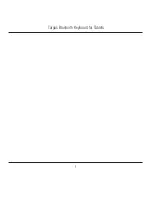
Function
Oxymax COS22D
20
Hauser
5.2
Calibration
Calibration is a means of adapting the transmitter to the characteristic values of the sensor.
Normally, sensor calibration is seldom necessary. It is necessary after:
• First commissioning
• Replacing a membrane or electrolyte
• Long breaks in operation without power supply
Within the framework of system monitoring and supervision, for example, the calibration can also be
cyclically monitored (at typical time intervals, depending on operating experience) or renewed.
5.2.1
Types of calibration
You can carry out single-point or two-point calibration for the sensor.
In most applications, single-point calibration suffices in the presence of oxygen (=calibration of
measured value at air).
The additional calibration of the zero point (two-point calibration) improves the precision of the
measurement results in the trace range. Calibrate the zero point with nitrogen (minimum 99.995%) or
with water free from oxygen, for example. In doing so, make sure the measured value has settled
correctly (20 to 30 minutes) to avoid incorrect measurements in the trace range at a later stage.
The available types of calibration depend on the transmitter used. Refer to your transmitter's
Operating Instructions to find out which types of calibration are supported.
The following section
only
describes the calibration in air (saturated with water vapor) as the easiest
method of calibration and therefore the recommended method.
However, this type of calibration is only possible if the air temperature is
≥
–5
˚
C (23
˚
F).
5.2.2
Calibration in air
1.
Remove the sensor from the medium.
2.
Clean the outside of the sensor with a damp cloth.
3.
Then wait while the sensor adjusts to the temperature of the ambient air. This takes about
20 minutes. Check that the sensor is not in direct sunlight during this time.
4.
If the measured value display on the transmitter is stable, carry out the calibration in accordance
with the Operating Instructions of the transmitter.
5.
Place the sensor in the medium again.
Make sure you comply with the instructions for calibration in the Operating Instructions of the
transmitter.
Summary of Contents for Oxymax COS22D
Page 1: ...BA00447C 07 EN 02 12 71153853 Operating Instructions Oxymax COS22D Dissolved oxygen sensor...
Page 7: ...Oxymax COS22D Identification Endress Hauser 7 a0014925 Fig 1 EC declaration of conformity...
Page 16: ...Wiring Oxymax COS22D 16 Endress Hauser a0010056 Fig 8 Connection in hazardous locations...
Page 40: ...BA00447C 07 EN 02 12 FM9...
















































